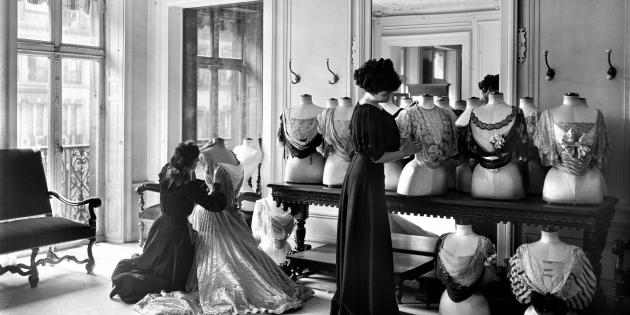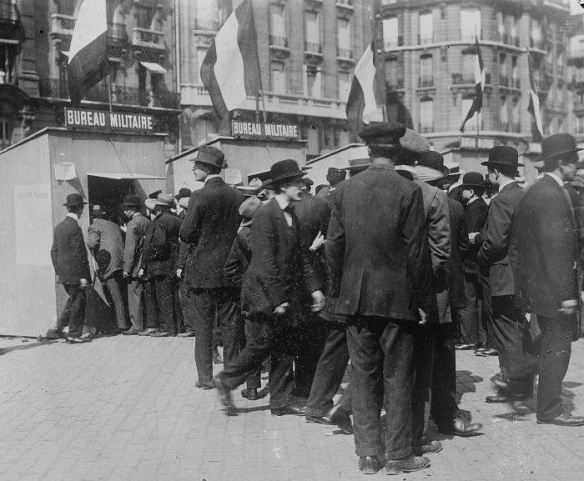A Wartime Art Story in Paris and Roussillion
Susan Vreeland‘s historical fiction will always appeal to me, ever since an artist friend first handed me a dog-eared copy of Girl In Hyacinth Blue way back in 1999. Since then Vreeland has written quite a few art history novels, including Luncheon of the Boating Party (read about my literary day trip here), Clara and Mr. Tiffany, The Forest Lover, Life Studies and The Passion of Artemesia. I’m such a Vreeland fan, the only one I haven’t read is Life Studies. Better get on that. . . .
 Anyway, Vreeland’s latest is called Lisette’s List (available August 26, 2014 in the US) and is everything what we have come to expect from her. It is yet another lovely art history novel, this time set in Paris and Roussillion, a quaint hilltop village in the Luberon area of France.
Anyway, Vreeland’s latest is called Lisette’s List (available August 26, 2014 in the US) and is everything what we have come to expect from her. It is yet another lovely art history novel, this time set in Paris and Roussillion, a quaint hilltop village in the Luberon area of France.
Much of the book takes place during and after World War II, when Lisette’s husband decides to hide his family’s valuable paintings rather than let them fall into the hands of the occupying Germans forces. The catch is, Lisette’s husband doesn’t tell her where he hid them, worried that she would be coerced into giving them up while he is off at war.
Lisette Roux’s story begins at a Catholic convent in Paris, La Maison des Filles de la Charité de Saint-Vincent-de-Paul on rue de Bac, where Sister Marie Pierre teaches Lisette enough to instill a lifetime passion for art. Lisette dreams of the day when she could work in an art gallery in Paris, the center of the art world. In the meantime, Lisette works in Maison Gérard Mulot, a rue de Seine patisserie near the convent (it’s still there – you should go there if you can!)
Lisette meets her future husband André, a talented young frame maker, on the corner of rue de Seine and boulevard Saint-Germain. They enjoy a sophisticated 1930s Montparnasse lifestyle in all of the famous cafés, including The Rotunde, La Couple, the Dingo and Closerie des Lilas.
In 1937, Lisette and André must give up their Paris dreams to go help with Andre’s elderly grandfather who lives in a small village in southern France. Lisette misses Paris, but learns to appreciate the small quiet pleasures of provincial life. She bonds with her grandfather-in-law Pascal as he shares the story of his life, from his work in the ochre mines near Roussillon to his job as a pigment salesman and frame maker for such artists as Pissaro and Cézanne.
The not-yet-famous painters sometimes paid Pascal with a painting in lieu of money. As a result, Pascal happens to own a few incredible paintings. In some of the best passages of the book, Pascal explains how he came to own each painting and what they meant to him. Vreeland explains in her author’s note that she invented two of the paintings in the book, but the rest are real, including one of Cézanne’s paintings of Mont Saint-Victoire:

Paul Cézanne, Mont Sainte-Victoire and the Viaduct of the Arc River Valley (1882-85), Metropolitan Museum of New York. In the book, Lisette said this was her husband’s favorite painting because it captured the region of Provence so well: “cultivated fields dotted with ochre farmhouses, a string of distant buff-colored arches of a Roman bridge, a narrow country road, tall pine trees on the left, their trunks bare, with foliage only at their tops, and the grand Montagne Saint-Victoire in the distance, a pale lavender moonlit, triangular and imposing.”
Pissaro’s Red Roofs of Pontoise:

Camille Pissaro, Red Roofs, Corner of a Village, Winter, Le Verger, Côtes St-Denis à Pontoise, oil on canvas (1877) Musée d’Orsay, Paris. In the book, the elderly character Pascal uses this painting to teach Lisette the history and significance of the ochre mines near Roussillon. He says: “And the history of Roussillon is in . . . the tile roofs of l’Hermitage in Pontoise. Those roofs are stained red-orange from Roussillon pigments. And the red ground and the row of bushes aflame–that’s Roussillon red-ochre. That may not mean anything to you now, but if you had lived here all your life and had seen those miners come home filthy and exhausted, it would.”
As well as Pissaro’s Factory Near Pontoise:

Camille Pissaro, Factory near Pontoise, oil on canvas (1873), Museum of Fine Arts, Springfield, MA. In the book, Pascal tells the story about how Pissaro give him this painting. Pascal visited Pissaro at his home in Pointoise, just north of Paris, delivering a frame Pascal had just carved. Pissaro said, “I haven’t a sou, but you can choose a painting from this row for yourself.” Pascal pulled a canvas from the back of the stack and saw a small painting of a factory. Pascal recognized it as the same Arneuil paint factory in Pointoise where he had sold ochre pigments from Roussillon. As Pascal told Lisette, “Inside that building, at long lines of tables, dozens of workers turned raw pigments into paint and filled the tubes Tanguy sold to Pissaro, Cézanne, Van Gogh, Gaugin, and others – the hues we made in the furnaces of the Usine Mathieu, our factory right here in Roussillon, . . . ” Lisette then realized why Pascal had chosen that painting: “Despite its ordinariness, it spoke to him of his purpose, his participation in the world of art, the link in the chain from mine to majesty, . . .” (I love that phrase, don’t you? — “From mine to majesty?)
Pascal delights in telling Lisette the story of his visit to Cézanne’s studio in Aix-en-Provence, another lovely town about 25 miles from Roussillon. As Pascal describes Cézanne’s home: “It was a grim, cluttered old house. The studio had high ceilings and tall windows. I seem to remember a potbellied stove. Along a shelf there were white compotiers like my mother’s, straw-wrapped wine bottles, a candlestick, gray jugs, pitchers, and the green glazed toupin [olive jar] that’s in my painting.”
You can still visit Cézanne’s house and studio today. It is known as Atelier Cézanne and is located on a hill at 9 rue de Cézanne. There is also a Paul Cézanne Tour sponsored by the Aix-en-Provence Tourist Office, where you get to see the Bibémus quarries that are an important part of the story in Lisette’s List. You can even download this “Cézanne’s Footsteps Map” for your own self-guided tour through Aix.

The doorway to Cézanne’s studio in Aix en Provence. The studio and gardens are open for public tours.

A nice touch – Cézanne’s coats, hats and smudge-up art smock still hang in the corner of his studio.
Lisette has her own brush with a famous artist as well, based on the true story of Marc Chagall’s escape to the French countryside and finally to New York during the early years of the German occupation. Chagall was Jewish, and was saved by a secret American rescue operation that smuggled artists and intellectuals out of Marseille with forged visas.
Vreeland imagines that the Chagalls might have hidden out in the hills of Provence. Lisette’s bus driver friend (who happens to work for the French Resistance) introduces her to the Chagalls, who are hiding out in an abandoned school for girls on the outskirts of Gordes, another hilltop village in the Luberon region. Vreeland imagined that Lisette would have had friendly chats with Bella and Marc about Chagall’s new style of painting. When Lisette returns for another neighborly visit, she learns that the Chagals had escaped to America but had left a painting behind for Lisette as a gift for her friendship.

Marc Chagall, Bella with Rooster in the Window, Private Collection. In the story, Lisette wonders whether the woman in the window is her, along with her own little pet goat named St. Genevieve. Lisette ponders: “Was the woman Bella or me? Was the man Marc or André? A crescent moon, or maybe it was a slim fish, hung in the rosy sky. I was tantalized by the ambiguity. The image blurred as I recognized Marc and Bella’s love for me.”
In Lisette’s List, Vreeland delivers a fascinating dose of art history and art appreciation, just like we have come to expect from her. I loved the way she traced the pigments all the way from the Roussillon ochre mines to the paintbrushes of Pissaro and Cézanne. I also enjoyed watching Lisette’s character transition from a Parisienne to a Provençale, adapting beautifully to the southern, rural way of life without losing her love for Paris. As Lisette herself said, “J’ai deux amours.”
If I have any reservations about the novel, it is probably that Lisette’s search for the hidden paintings seemed unduly prolonged and the plot device of “Lisette’s List” seemed a bit underwhelming. I would have enjoyed more heightened danger in the plot, and wished that the German threat had been put to use in a more sinister way. But in the end, Lisette’s story wrapped up well in post-war Paris and I was left satisfied overall.
The real treat of the novel is to read about the setting of Roussillon. I had the pleasure of spending an afternoon there, walking down its narrow red streets and shopping in its art galleries. I even had the time to take a hike down a dusty red path to see its beautiful red ochre cliffs up close. It is now a spectacular little artsy town, just as the villagers had hoped in the novel. By all means, if you’re heading to Provence, add this town to your itinerary and leave a little time to hike on the paths out to the red ochre cliffs. It’s sublime.
You might want to poke your head into Francoise Valenti’s art gallery and say hello for me. You can assure her that her round painting of the view of Paris from the breakfast table is now quite happy at my home in Chicago.

A lovely oil painting of Rousillon by Francoise Valenti, an artist I admired in a gallery in Roussillon.
Lisette’s List by Susan Vreeland: Highly Recommended
Be sure to visit Susan Vreeland’s website where you can find more photos and information about the inspiration for the book.






















You must be logged in to post a comment.